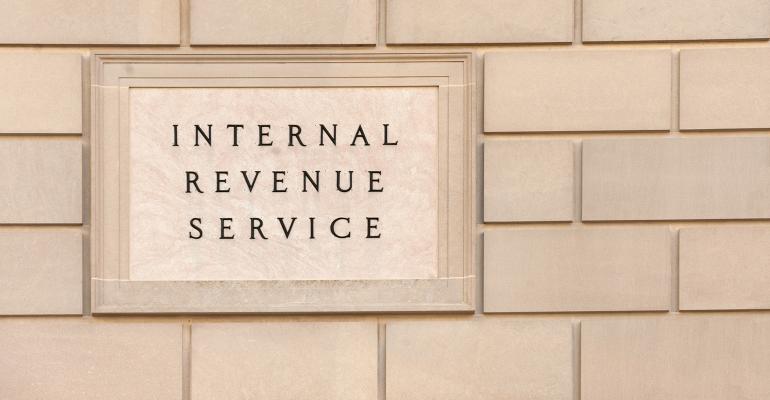One of the more perplexing sections of the recently issued required minimum distribution final regulations is Section 1.401(a)(9)-4(f)(4), “Multiple Trust Arrangements,” a holdover from the proposed regulations. That section provides:
If a beneficiary of a see-through trust is another trust, the beneficiaries of the second trust will be treated as beneficiaries of the first trust, ... In that case, the beneficiaries of the second trust are treated as having been designated as beneficiaries of the employee under the plan. (Emphasis supplied.)
The drafters of the proposed and final regs may have only considered current beneficiaries when they referred to “the beneficiaries of the second trust.” If so, the highlighted language makes sense. But the above language doesn’t say it’s limited to current beneficiaries, which also opens the door to include remainder beneficiaries. Under this broad construction, this provision from the final regs will have widespread effect.
For example, assume a client with two children establishes trusts for each of them and their families under the client’s estate plan. Each child’s trust provides that if the child dies without descendants, the balance of the trust pours over into the trust for the other child and the child’s family. If both children eventually die without descendants, the remaining trust assets pass to the charity. Will the charity be considered a designated beneficiary of the client under a literal reading of the above multiple trust arrangements provision? If so, the trusts won’t qualify for a 10-year deferral. If not, the trusts will qualify.
Inadvertent or Intentional Omission
The multiple trust arrangements language referenced above, and in particular the language “are treated as having been designated as beneficiaries of the employee under the plan,” exactly parallels the more general language of Section 1.401(a)(9)-4(f)(3) of the final regs:
(3) Trust beneficiaries treated as beneficiaries of the employee—
(i) In general. Subject to the rules of paragraphs (f)(3)(ii) and (iii) of this section, the following beneficiaries of a see-through trust are treated as having been designated as beneficiaries of the employee under the plan—
(A) Any beneficiary that could receive amounts in the trust representing the employee’s interest in the plan that are neither contingent upon, nor delayed until, the death of another trust beneficiary who did not predecease (and who is not treated as having predeceased) the employee; and
(B) Any beneficiary of an accumulation trust that could receive amounts in the trust representing the employee’s interest in the plan that were not distributed to beneficiaries described in paragraph (f)(3)(i)(A) of this section.”
(ii) Certain trust beneficiaries disregarded—
(A) Entitlement conditioned on death of beneficiary.
Any beneficiary of an accumulation trust who could receive amounts from the trust representing the employee’s interest in the plan solely because of the death of another beneficiary described in paragraph (f)(3)(i)(B) of this section is not treated as having been designated as a beneficiary of the employee under the plan.” (Emphasis supplied.)
While subsection 4(f)(3) provides that certain trust beneficiaries shall not be “treated as having been designated as a beneficiary of the employee under the plan,” the multiple trust arrangements subsection 4(f)(4) language contains no similar exception “if a beneficiary of a see-through trust is another trust.” The question is, was this omission inadvertent or intentional?
Example (2) in Section 1.401(a)(9)-4(f)(6) of the final regs may provide some guidance in answering this question. “Under the terms of Trust P, all trust income is payable annually to B, and no one has the power to appoint or distribute Trust P principal to any person other than B. A’s sibling, C, who is less than 10 years younger than A (and thus is an eligible designated beneficiary) and is younger than B, is the sole residual beneficiary of Trust P. Also, under the terms of Trust P, if C predeceases B, then, upon B’s death, all Trust P principal is distributed to Charity Z (an organization exempt from tax under section 501(c)(3)).”
The Internal Revenue Service’s analysis concludes: “Pursuant to paragraph (f)(2)(iii)(A) [correct cross-reference appears to be to paragraph (f)(3)(ii)(A)] of this section, because Charity Z’s entitlement to amounts in the trust is based on the death of a beneficiary described in paragraph (f)(3)(i)(B) of this section who is not also described in paragraph (f)(3)(i)(A) of this section, Charity Z is disregarded as a beneficiary of A.”
Assume that, rather than an outright remainder beneficiary, the second trust beneficiary in the multiple trust arrangement referenced above only receives assets from the first trust if all of the current beneficiaries of the first trust pass. Assume also that if all the beneficiaries of the second trust pass, the remaining trust assets of the second trust pass to Charity Y. Based on the analysis in Example 2, why shouldn’t Charity Y’s interest in the second trust be disregarded? Read literally, however, the multiple trust arrangements section of the final regs would treat Charity Y as a designated beneficiary of the employee under the plan.
Although reasonable minds can differ, logic would dictate that Charity Y should be disregarded as a designated beneficiary in the second trust in the same way Charity Z is disregarded as a designated beneficiary in Example 2 of the IRS’ final regs. Although the multiple trust arrangements section labels all of the beneficiaries of the second trust as “designated beneficiaries,” it never specifically addresses whether some of them should nevertheless be treated as disregarded designated beneficiaries. The disregarded beneficiary section of the final regs, which isn’t limited in its application, should arguably fill this gap.
Drafting Option
Until the IRS clarifies this situation, one drafting option is to avoid designating a charity as an ultimate beneficiary under a trust instrument if the trust holds IRA assets. Similarly, if individuals are designated as contingent beneficiaries, the drafting attorney may choose to limit the ages of the individuals who receive the IRA assets in the trust.





